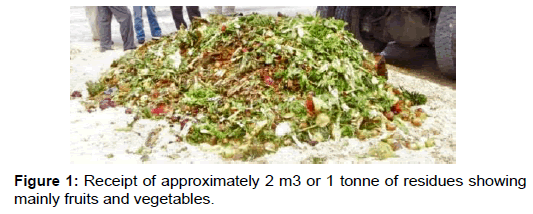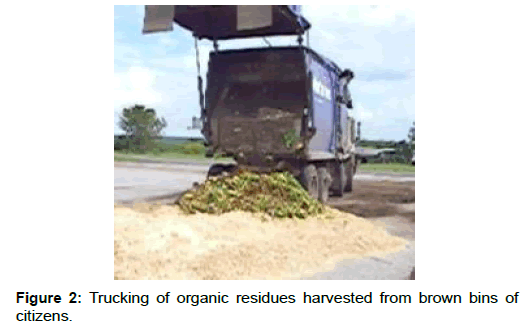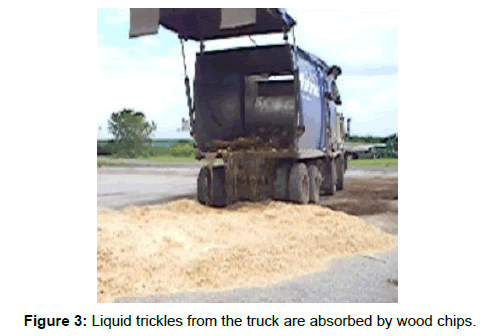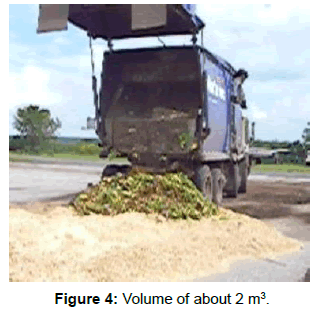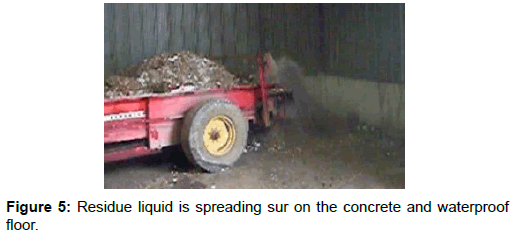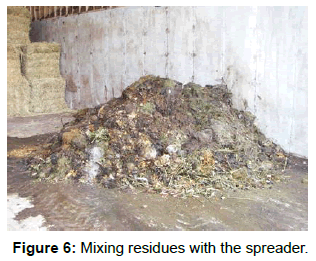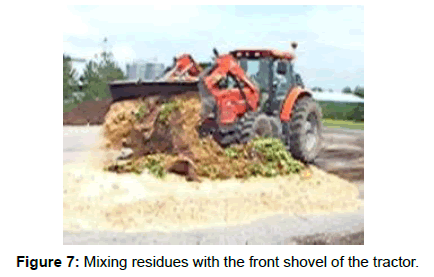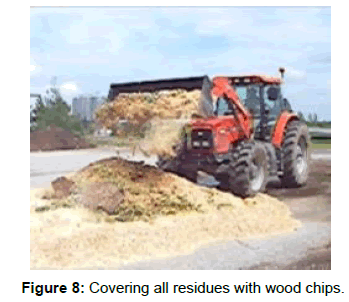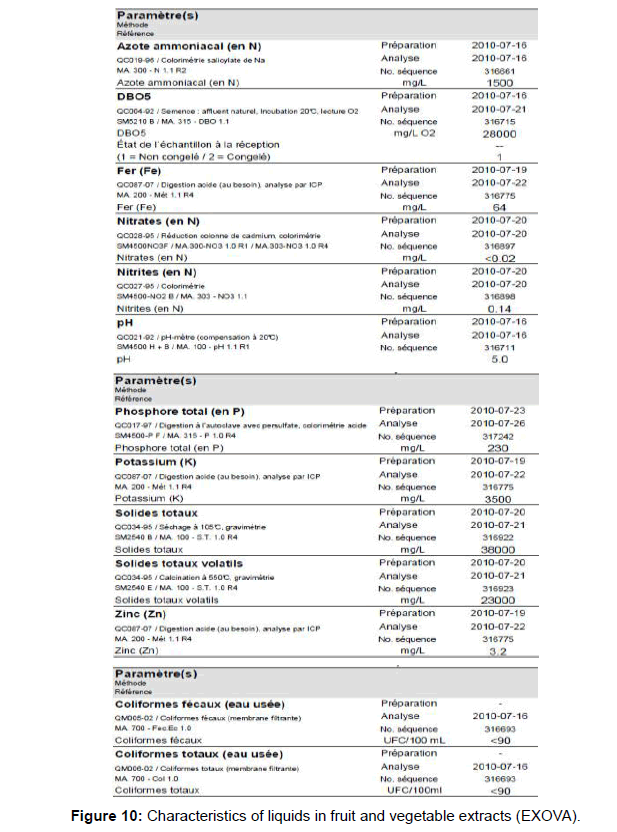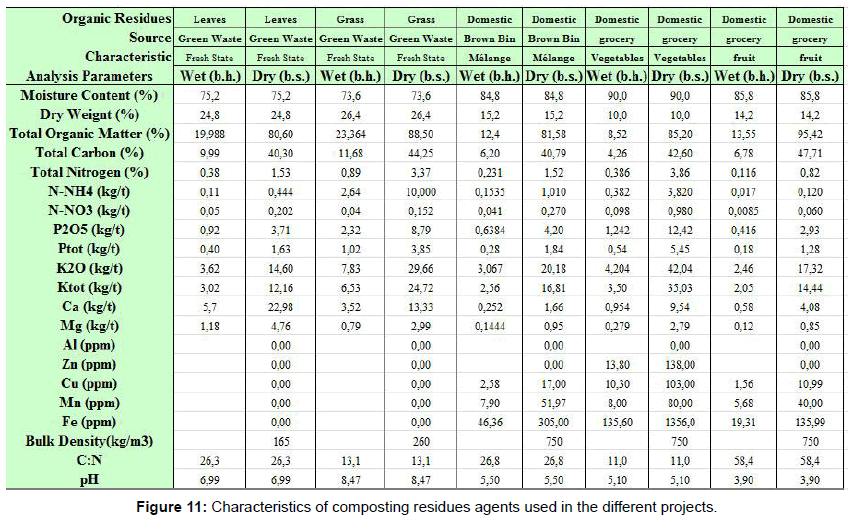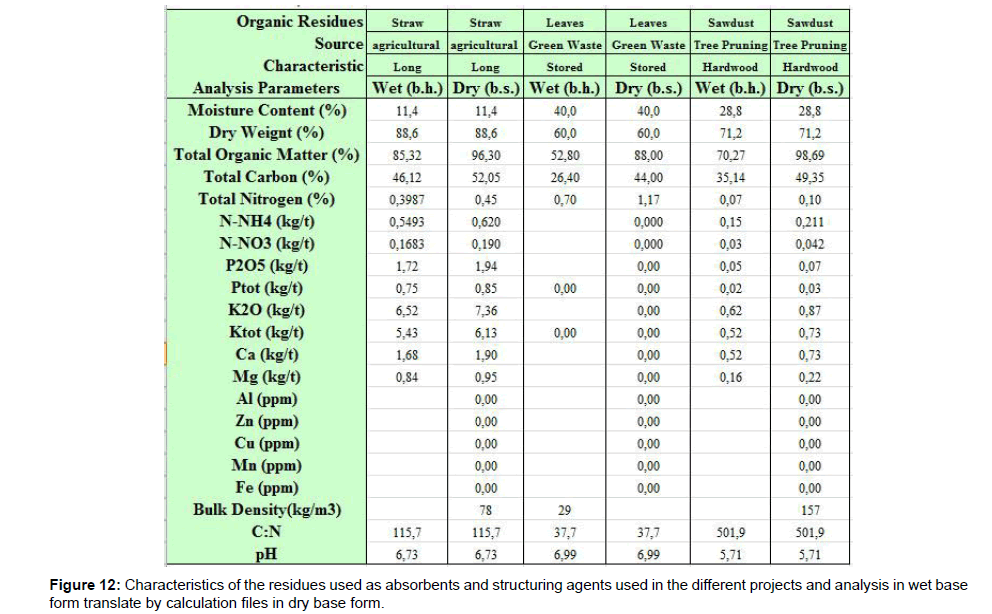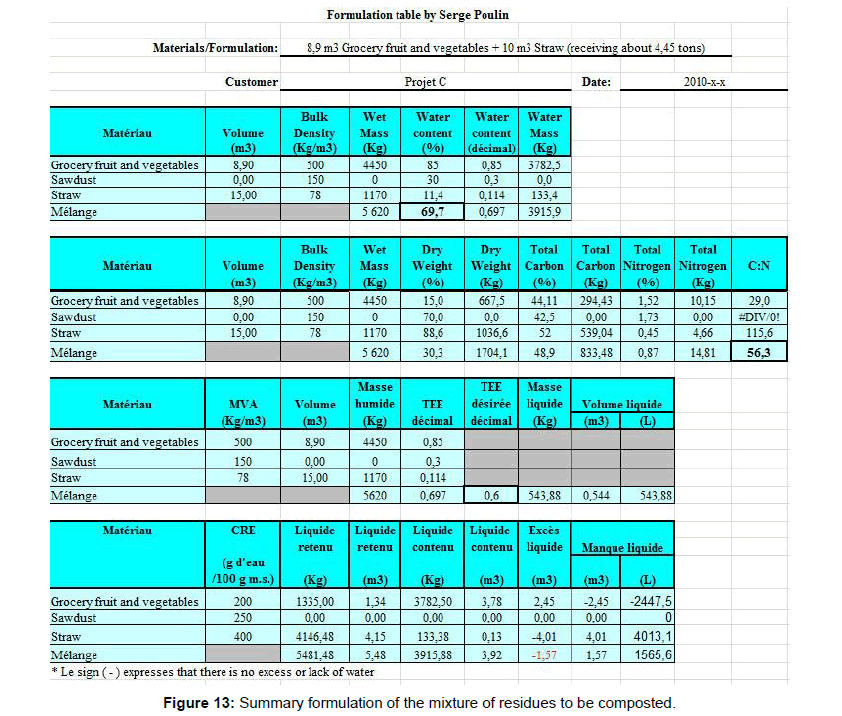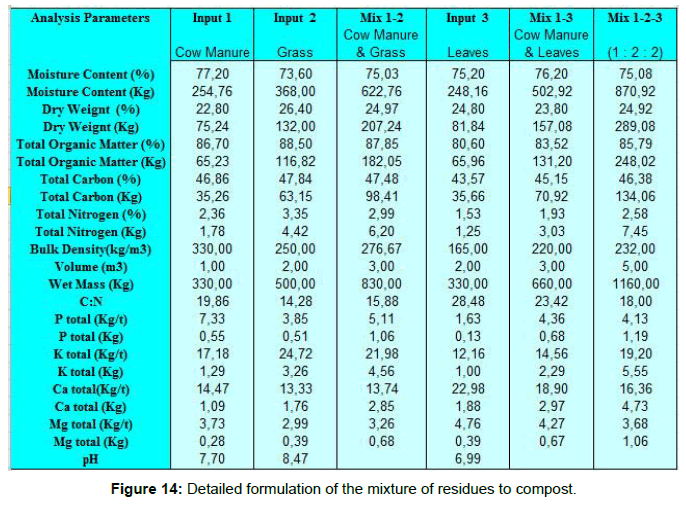Research Article, J Soil Sci Plant Health Vol: 3 Issue: 1
Technical Issues Related to the Composting of Residues Containing a Very High Quantity of Liquid Rich in Solublic and Suspended Elements, Mineral and Organic
Serge Poulin*
Department of Agricultural Microbiology, Canadian Association of Farm Advisors (CAFA), Canada
*Corresponding Author : Serge Poulin
Department of Agricultural Microbiology, Canadian Association of Farm Advisors (CAFA), Canada
E-mail: compostercestmagique@gmail.com
Received: Febrauary 10, 2019 Accepted: February 14, 2019 Published: March 10, 2019
Citation: Poulin S (2019) Technical Issues Related to the Composting of Residues Containing a Very High Quantity of Liquid Rich in Solublic and Suspended Elements, Mineral and Organic. J Soil Sci Plant Health 3:1.
Abstract
Organic residues from grocery, restaurant, cafeteria, greens and domestic markets (browns back) should no longer be disposed in technical and sanitary landfills. These residues have a good richness in nutrients that can be recovered. On the other hand, some of these residues contain a very high proportion of liquid loaded with mineral and organic substances in solution and in suspended form, which constitutes a high risk of environmental pollution. Several technology transfer projects overseen by the author of this paper consisted of composting very liquid-rich residues such as fruits and vegetables from grocery stores. The objective of these projects was to recover all the liquids extracted from these residues without affecting the composting process and without compromising the quality of the composts produced. Solutions to this problem are based on measurements, analysis and calculations for the formulation of effective mixtures.
Keywords: Environmental; Agricultural; Compost; Residues; Grocery
Introduction
Organic residues from grocery, restaurant, cafeteria, greens and domestic markets should no longer be disposed in technical and sanitary landfills. Solid waste management is one of the most important challenges facing our large urban and industrial societies. Although the landfilling of waste produced by the population, public and private institutions, businesses and industries is common practice in industrialized countries, this practice has hardly begun in developing countries. Technical landfill is safer for the environment than sanitairy landfill, but its costly and even that of incineration are expensive. The recovery of these residues through composting is less expensive and extends the life of landfills [1-5].
These residues have a good richness in nutrients that can be recovered following their valuation. On the other hand, some of these residues contain a very high proportion of liquid loaded with mineral and organic substances in solution and in suspended form, which constitutes a high risk of environmental pollution. In addition, our soils need these fertilizing minerals and organic matter. There are many ways to value these residues, but composting is less expensive with a lower technological level. The following is the composition of liquids extracted from food market residues containing fruits and vegetables mainly presented in figure. Tests and experiments carried out or supervised by the author of this article, Mr. Serge Poulin, demonstrate the feasibility and also the difficulties encountered in composting these residues. It is a question of co-composting and local composting on farms of agricultural enterprises in crop and animal productions. The results of these experiments were not published in scientific journals, which did not allow taking stock of the methods used and the possible solutions to the constraints encountered. As trainer of environmental technologists, environmental advisers (agricultural and municipal), French trainees and researcher in the field of environmental technology transfer, I had to deepen my understanding of the physical, chemical and biological aspects of the environmental composting technology. It is this expertise that I want to share with everyone interested in composting organic matter [6-11].
Sources and Description of these Organic Residues
The composted residues in my technology transfer projects came from grocery stores, restaurants, cafeterias and brown bins in a municipality’s three-way collection. Some of these tests were conducted with exclusively food market residues or with mixtures of residues from all the sources mentioned above. These residues are mainly composed of fruits, vegetables and green residues (grass) containing a large amount of liquid. Despite the significant seasonal variation in composition and residue characteristics, the proportion of liquid remains very high. This problem must be corrected to allow and ensure efficient composting (Figures 1 and 2).
Treatment Context
To reduce the distance between the production and the treatment of these residues, composting is carried out nearby by agricultural producers. These projects of technological transfer on the composting of proximity of these residues by agricultural producers are realized on farms in vegetable and animal production. The residues stored in containers are collected, by a company, in trucks intended for this purpose and transported to the composting sites. Storage and transportation amplify the problem of management and disposal of liquids contained in large quantities in these residues. During these stages, the liquids are released with the crushing and mixing of the residues. Arrivals are weekly or biweekly depending on the amount of residues produced. These residues are deposited on a concreted waterproof platform on the farm. At this stage, there is a significant runoff of liquids during the tailings discharge. It is this high extraction of liquid which is the main composting constraint if it is absolutely necessary to collect all the liquids in the process. It can be seen during reception that a smaller volume of residues causes less residue extraction of the liquid. (Figures 3-5) show that even a small volume of feedstock is rejecting an impressive amount of liquid. In a sewage system for the treatment of residues rich in liquid, there is frequently a solid-liquid separation step and a treatment of the liquid, for example in an oxidation pond or in filtering marshes, different from that of the solid.
Composting of Residues
Residues received by agricultural producers are mixed in a manure (or compost) spreader or tractor’s front shovel with other organic materials in calculated proportions and placed in a sealed concrete cell. Mixing with the spreader results in an even higher extraction of the tailings liquid and may therefore require a greater amount of organic absorbing material than with the use of a tractor’s front shovel, as the latter method makes it possible to mount successive layers of absorbent residues and residues to be composted, starting with a greater thickness of the absorbent material on the floor. The spreader mixture can be used when the extracted liquid is totally absorbed and thus retained. This stage, considered as a pretreatment before composting, significantly increases the duration of the manipulations carried out by the agricultural producer and also the cost of the treatment, but makes it possible to reach more effectively the objective aimed at, that is to say a higher recovery of the residue liquid. Calculations are made using proven spreadsheets as part of the composting training for future agrienvironment technologists. Spreadsheets and formulation of mixtures were designed by the author of this article. The main objective is to compost the largest possible quantity of residues for each shipment by integrating the largest quantity of liquid from these residues (Figures 6-8).
Mixing formulation
The main problem to consider when formulating the mixture is the very high amount of liquid. Therefore, the absorption of as much liquid as possible should be made, taking into account the available space, the acceptable volume of these residues, the liquid retention capacity and the cost of other organic materials added. These other materials must play a role of absorbent and structuring to promote the retention of a larger amount of liquid possible. The added organic material is mainly manure, straw, wood residues (sawdust, chips, ripe, etc.) and shredded cardboard boxes.
Thus, to achieve adequate formulation that has the potential to achieve the intended goal, it is essential to perform targeted measurements and analyzes of all the residues used in the mixtures. The first measure is the sizing of available space on a sealed and concrete platform.
For fruit and vegetable residues, the water content (%), bulk density (kg/m3) and volume (kg) to be composted are important data to obtain especially with this type of residue. Here are some of the measures and analyzes from technology transfer projects. The high proportions of water in fruits and especially vegetables. For the residues that must serve as absorbents and structuring agents, the water content, the apparent density, the water retention capacity, the available volume and the acquisition cost are data that will help to make the best possible choice of these residues. Here are some of the measures and analyzes from technology transfer projects. All this information can be obtained by measurements and analyzes in the field and also done in the laboratory. They make it possible to make formulations for the mixture of residues to be composted in order to correct or at least reduce the problems and to specify the limits related to the compostable volume which make it possible to reach the objective and to favor the process of composting, safe for the environment.
Confirmation and correction of the mixture
It is still very difficult to predict everything that happens when the mix is done, that is why you have to do all these measurements and analyzes once the mix is ready to compost. It is preferable to add an analysis of the porosity of the mixture in order to estimate the aeration potential of the compost pile. Apparent density assessment can also help us estimate the airflow potential in the cluster and confirm or negate the estimate obtained with the formulation to reduce or avoid crushing the residues. The water content indicates the quantity of liquid that the mixture allows to retain which confirms or invalidates the estimate obtained with the analysis of the water retention capacity of the absorbent organic materials added. The estimates of the possible volumes of residues to be composted and the structuring and absorbing materials to be added allow us to estimate the volume of the mixture, but this volume is always smaller than the estimate obtained by formulation. This volume must be measured and the composting area assessed to treat all residues to be received.
There is a limit to the thickness of the mixture of organic matter to be composted. If too much water-rich residue is added to the pile, there is a high risk of crushing these materials, fluid extraction caused by the water’s gravity and provoke all the problems that this causes. It is of paramount importance to respect the principles of physics related to the gravity and compressibility of organic materials that contain high amounts of liquid.
Measuring the rise in temperature in the compost is a good indicator that the mixture achieves the intended purpose and also ensures a good biological activity favorable to an adequate composting process. Measuring oxygen with the compost oximeter can also be useful in assessing whether conditions are favorable for composting. Finally, a measurement of the height of the cluster during the first days can indicate to us if the structure of the cluster of compost is maintained allowing a good air circulation in the cluster (Figures 9-14).
Conclusion
In conclusion, if the conservation of waste liquids is a goal, it is not practical and economical to accumulate large piles of compost. It is preferable to have a larger number of clusters on a larger watertight platform area, which may have the effect of reducing the amounts of residues received by agricultural producers. Do not reduce the use of absorbent and structuring material to reduce the cost of composting, because this decision can result in higher costs. The simple measurements and analyzes used in the field are essential for formulating adequate mixtures, especially if one has to compost residues with major problems such as a very high quantity of liquid. If we consider the costs related to the solid-liquid separation, the storage, the treatment and the use of the liquid on the fields, thus to the management of the liquid phase, it is preferable to keep this liquid containing interesting mineral and organic elements in compost.
References
- Vanginkel JT, Raats PAC, Vanhaneghem IA (1999) Bulk density and porosity distributions in a compost pile. Netherlands J Agricultur Sci 47: 105-121.
- Centre d’expertise en analyse environnementale du Québec (2009) Méthode d’analyse, détermination de la masse volumique d'un sol agricole : méthode gravimétrique. MA 100-Mas 10.
- Conseil des productions végétales du Québec (CPVQ) (1997) Détermination du pourcentage d’humidité.
- Conseil des productions végétales du Québec (CPVQ) (1986) Détermination de la porosité apparente totale. AGDEX 533.
- Conseil des productions végétales du Québec (CPVQ) (1988) Détermination de la densité Méthode DE-1, AGDEX 533.
- Conseil des productions végétales du Québec (CPVQ) (1997) Estimation de la rétention en eau et en air des différents milieux.
- American Society for Testing and Materials (ASTM) (1993) Standard Test Methods for Moisture, Ash, and Organic Matter of Peat and Other Organic Soils. ASTM D 2974-87.
- Haug RT (1993) The Practical Handbook of Compost Engineering. ISBN 0-87371-373-7.
- Nova Scotia Agriculture and Fisheries (NSFA) (2014) On-Farm Manure Management through Composting. 22.
- Alberta Agriculture, Food and Rural Development (2005) Manure Composting Manual. Livestock Engineering Unit & Environmental Practices Unit Technical Services Division. 27.
- BC Ministry of Agriculture, Food and Fisheries (1998) Composting Facrsheet, BC Agricultural Composting Handbook. Resource Management Branch. 62.
 Spanish
Spanish  Chinese
Chinese  Russian
Russian  German
German  French
French  Japanese
Japanese  Portuguese
Portuguese  Hindi
Hindi 